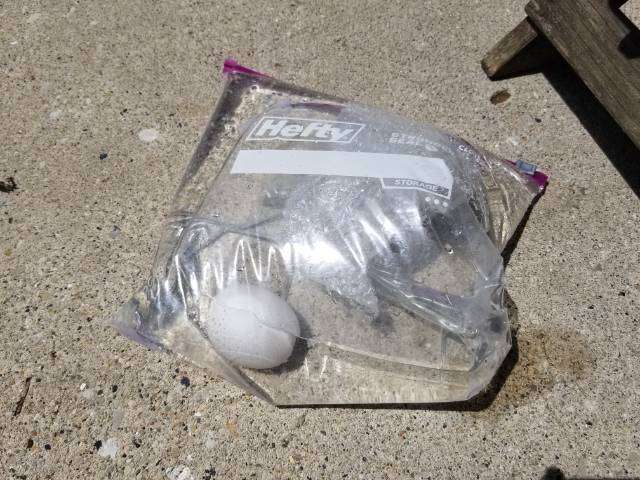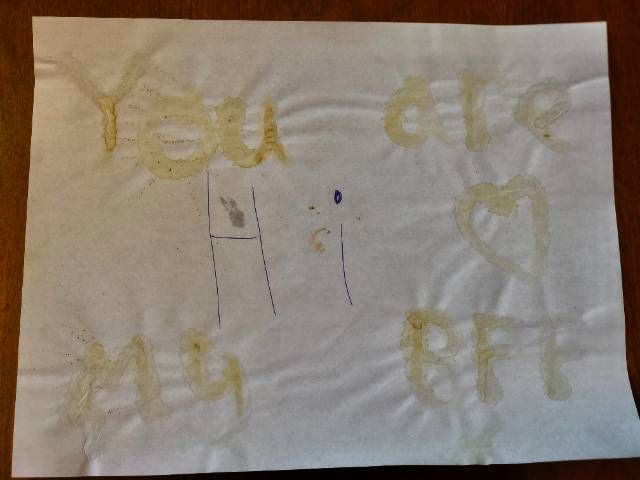
Easy Science Experiments to Do at Home (With Videos!)
Here's a list of fun, easy science experiments to do at home with kids that parents say are actually worth trying!
These hands-on science experiments for kids use simple materials and ingredients you might already have around the house, and are a great way to have fun with science and plan educational indoor activities.
If you try any of these easy science experiments at home, add a comment to let us know how it goes and share any tips with fellow parents!
Rock Candy Science Experiment
Kelly R. said: My kids loved this easy do at home science experiment, which uses sugar and water to teach about saturated and supersaturated solutions. It doesn't hurt that you get to eat the results!
Elephant Toothpaste Science Experiment
Shila said: This is a cool science experiment where soap traps oxygen gas to create an expanding colorful foam. Don't skip the food coloring!
Alka Seltzer Lava Lamp
Shila said: This easy science experiment for kids is a groovy lesson in density and polarity. You can save your lava lamp potion and reactivate it by adding more Alka Seltzer tablets!
Exploding Baggie Science Experiment
Kelly R. said: For a much more exciting spin on the traditional baking soda and vinegar reaction, this is the perfect easy science experiment to do at home. Kids learn about the acid/base reaction with an explosive payoff!
String Telephone Sound Experiment
Shila said: You can use cups and string to create an easy science experiment that teaches kids about how sound waves travel. The telephone is also just fun to play with when you're done!
Milk Art Science Experiment
Shila said: This easy science experiment (and art project!) demonstrates surface tension in such a fun way. Use multiple different colors for the coolest effect.

Egg Drop Science Experiment
Kelly R. said: Use household objects to build a container to protect an egg, and drop it from a height to test it out. Get creative! Drinking straws, paper, cardboard tubes, cotton balls, popsicle sticks, string, baggies, tape - anything is fair game for this easy to do at home science project and STEM activity!
Ice Cream in a Bag Science Experiment
Shila said: This fun science project makes a cool and tasty treat and is a great summer bucket list activity to try as a family! Experiment with different flavors or mix-ins, and see if it works as well using different types of salt.
Skittles Rainbow in a Glass Experiment
Shila said: This cool science experiment is a lesson in density! Kids use Skittles and water to create colorful layers with different densities.
Baking Soda and Vinegar Volcano Experiment
Shila said: The chemical reaction between vinegar and baking soda in this easy science experiment will yield a quick-fizzing, bubbly carbon dioxide gas that will erupt out of your homemade volcano!

Celery Science Experiment
Alexandra F. said: Cut a few stalks of celery by the white root. Add 20-25 drops of food dye into a vase or large glass with about 6-8 ounces of water. Blue food coloring works the best! Insert the celery (with leaves still intact) into the vase and observe after 36 and 48 hours. The leaves should appear more vibrant than before in a bold new color.
This easy science experiment for preschoolers helps them visually learn how plants "drink" water by adding color to the process! From Teaching Tiny Tots
Soda Bottle Tornado Experiment
Kristy Pepping said: If your kids are interested in weather and wonder how tornadoes form, a great way to demonstrate this phenomenon is with an empty two-liter soda bottle. You can have kids record how fast water drains out just by holding it upside down when full of water. Then have your children swirl the bottle and see how fast the water comes out.

Lemon Juice Invisible Ink Experiment
Shila said: For this easy science experiment, mix the juice of half a lemon with one spoonful of water in a bowl. Dip a Q-tip in the mixture and write a secret message on a piece of paper or cardstock. Let your message fully dry and become invisible. Carefully iron directly on the paper to help the message reappear. Don't use the steam function. You could also write a decoy message with pen first!
Heat breaks down the carbon components in the lemons, causing them to change color and oxidize in the air.
Sundial Clock Science Project
Shila said: An easy DIY sundial clock can be a "full day" outdoor activity and science experiment for kids! Learn to tell time using the sun and a few common household objects. From Scientific American
Animal Blubber Science Experiment
Shila said: This easy at home science experiment uses shortening and ice water to help kids see how animals survive cold winters with fat reserves! From Discover and Learn Preschool
Primary photo: Upparent
Upparent collects community-submitted recommendations and reviews, and any ideas that are shared reflect the opinions of individual contributors.



